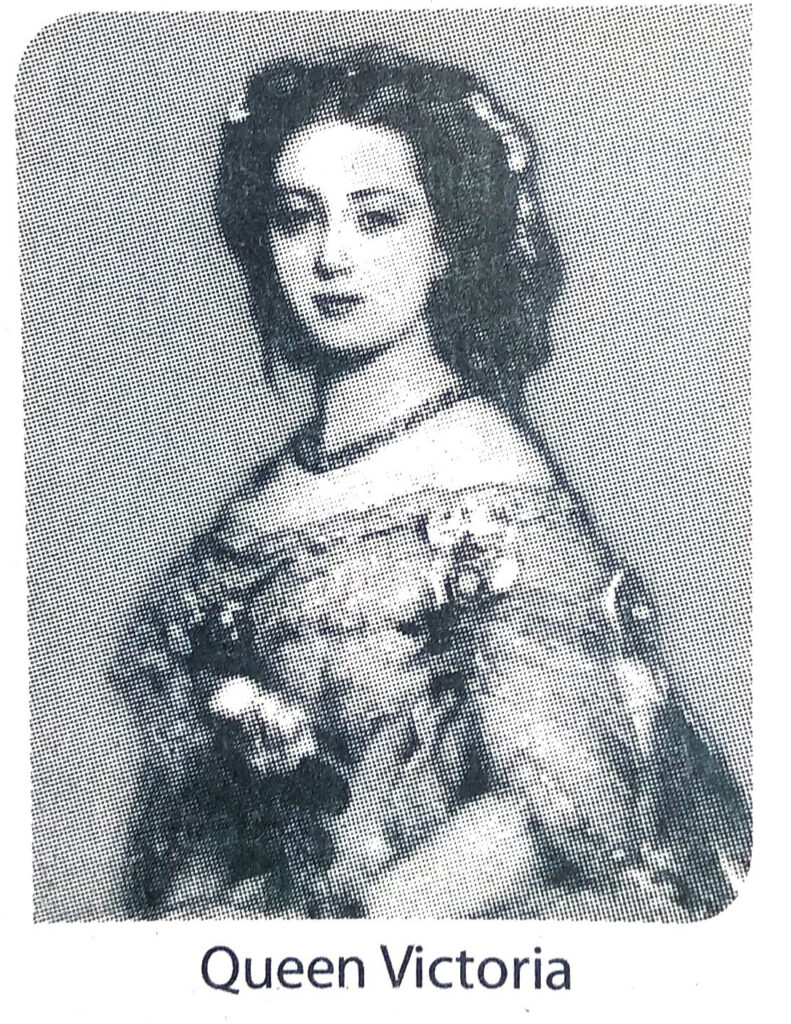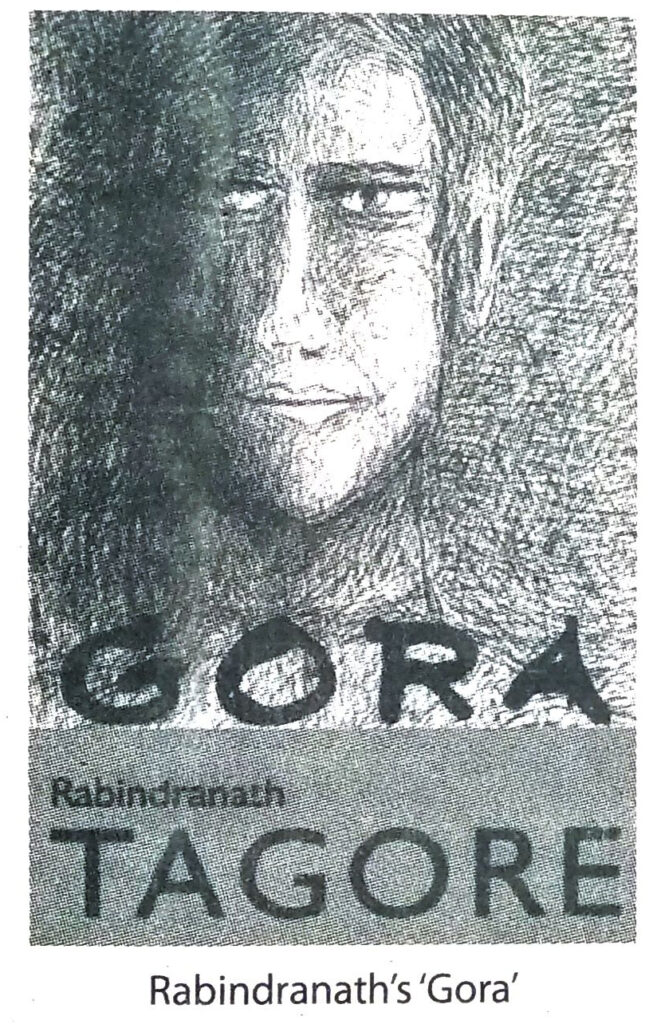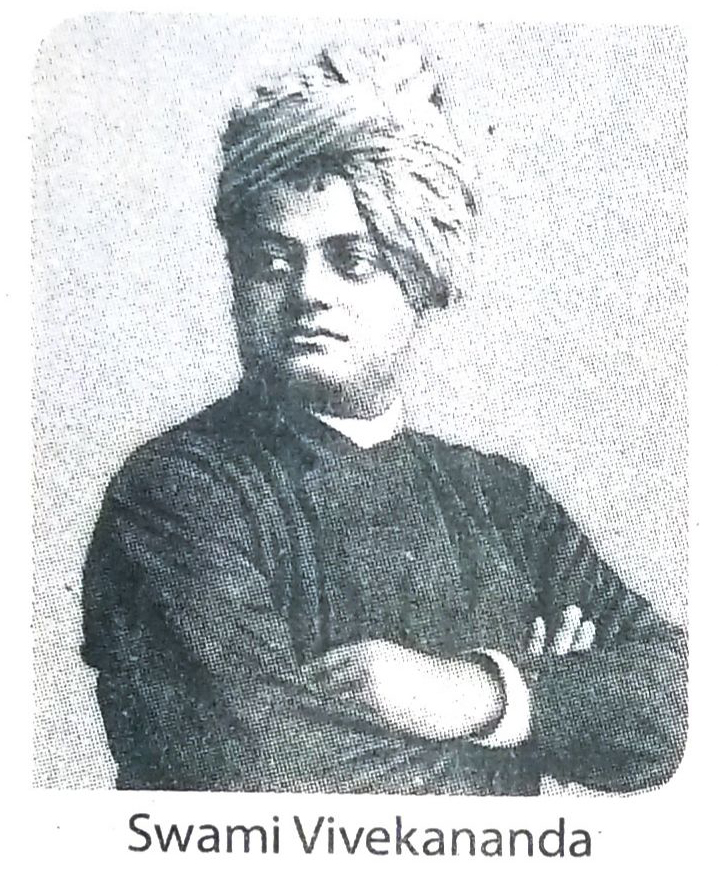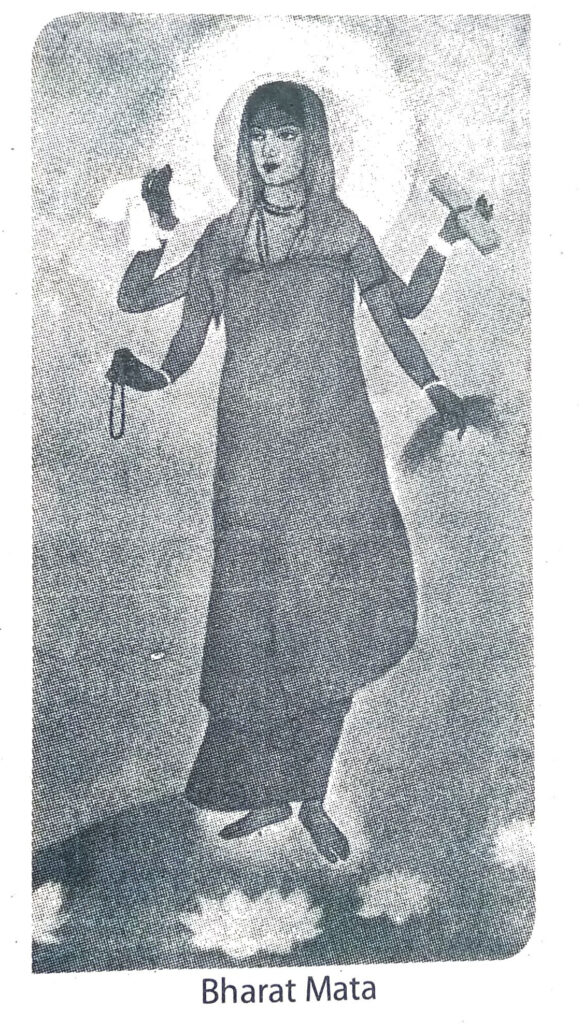WBBSE 10th Class Social Science Solutions History Chapter 4 Early Stages of Collective Action : Characteristics and Analyses
WBBSE 10th Class Social Science Solutions History Chapter 4 Early Stages of Collective Action : Characteristics and Analyses
West Bengal Board 10th Class Social Science Solutions History Chapter 4 Early Stages of Collective Action : Characteristics and Analyses
WBBSE 10th Class History Solutions
- The Revolt of 1857 was the most severe outburst of discontent following the battles of Plassey (1757) and Buxar (1764). The annexationist policy of the British, the long years of economic exploitation by the East India Company, the grievances of the Indian sepoys combined to create an atmosphere of rebellion.
- The main centres of the revolt were Delhi, Kanpur, Awadh, Barrackpore, Meerut, Lucknow, Shahjanpur, Muradabad, Bareilly, Bundelkhand, Allahabad, Jhansi, Fatehpur, Benaras, Arrah, Rohilkhand and Gaya.
- Most of the European historians point out that it was a revolt of Indian soldiers. The revolt was not a national war of independence, as it was confined to a small part of India. However the nationalists of India have hailed it as the First War of Indian Independence.
- The Revolt of 1857 failed because there was no centralised leadership and proper coordination. There were no experienced. military generals among the rebel leaders except Tantia Topi, Laxmi Bai and Nana Saheb. The lack of popular support and the apathy of Indian rulers also contributed to the failure of the mutiny.
- The Revolt brought about a shift in the British policy towards India. The rule of the English East India Company ended and India was brought under the British Crown by the Government of India Act of 1858.
- The associates of Rammohan Roy took the task of organising political associations. In 1836, the first such association was formed which was called ‘Bangabhasha Prakashika Sabha’. It sent petitions and memorials to the Government.
- The ‘Landholders’ Society’, founded in July, 1838, marked the beginning of an organised political activity. It was established to organise protests against the unjust governmental policies.
- The Indian Association (1876) organised the first all India agitation in 1877-78, on the issues of Civil Service and the Press Act. It organised two ‘National Conferences’ in Calcutta (Kolkata) in 1883 and 1885.
- Hindu Mela was organised by Nabagopal Mitra. The newly established theatre was directly anti-British. It exposed the merciless tyranny of indigo planters in ‘Nil Darpan’ by Dinabandhu Mitra, which led directly to Lytton’s Dramatic Performance Act in 1876.
- The 19th Century Indian literature roused national consciousness among the people. A host of literary men like Bankim Chandra, Vivekananda, Rabindranath preached nationalism through their writings. Bankim Chandra’s ‘Anandamath’ played an important role in arousing national consciousness. The song ‘Bande Mataram’ which features in his novel ‘Anandamath’ became the national hymn. With the growth of nationalism, the identity of India. came to be associated with the image Bharat Mata. Rabindranath’s vision of nationalism found expression in his novel Gora. ‘Bartaman Bharat’ by Vivekananda contains deep feelings on nation. Its closing paragraph is addressed to every Indian, urging them to rise and awake to the national ideal of identity with the Indian heritage.
TOPIC – A
Answer in 15 to 16 sentences
- His annexationist policy was high handed and ruthless. His principle of Doctrine of Lapse was against Hindu rites and customs. Jhansi, Jaipur, Sambalpur, Nagpur, Satara etc. were annexed by the principle of Doctrine of Lapse, which caused widespread resentment.
- The annexation of Awadh on the ground of maladministration agitated the Sepoys.
- Nana Saheb, the adopted son of Baji Rao II was deprived by Dalhousie from his hereditary pension.
- Dalhousie abolished the imperial title of the old emperor Bahadur Shah Zafar and forced him to vacate his ancestral residence in Delhi Red Fort. This wounded the feelings of the Indians, especially the Muslim population.
- The native rulers and princes, who had been thrown out of employment, were waiting for an opportunity of revenge. Thus Lord Dalhousie’s imperialist policy created an atmosphere of rebellion in thenative states of India.

- Scattered nature of the Revolt: The revolt was not carried out in a synchronised manner throughout the whole of India, but was scattered in nature. Thus it was easy for the British government to suppress the revolt.
- Support of the Gorkhas and the Sikhs: The Sikh and Gorkha communities showed support towards the British government and helped them in suppressing the Revolt.
- Lack of proper leadership: There was no proper single leader to lead the revolt across the different parts of the nation. Thus, each of the leaders in different regions led the revolts to achieve their own separate obectives, and thus the revolt fell apart gradually.
- Assistance from princely states: The princely states such as Kashmir, Rampur, etc., assisted the British during the Revolt of 1857. Scindian and Rajput kings did not take sides with the revolutionaries, and took up a passive stance during the revolt. This helped the British is suppressing the Revolt easily.
- Non-Cooperation from the educated class: The middle class Bengalis educated in Western pattern did not support the Revolt of 1857 and distanced themselves from it. They even showed support towards the British in some cases.
- Army Generals: There was a dire need of able army generals among the revolutionaries. On the other hand, the British forces had efficient leaders like Havelock, Neel, Outram, etc., who led them to battle against the sepoys.
- British power: The British army possessed better arms and firepower than the sepoys. Their naval power was greater than the Indians as well. They brought in soldiers and arms from England, Persia and Malay in order to strengthen their ranks.
Analytical Answer (AA) Type Questions
Answer in 7 to 8 sentences
- Relation between the ruler and the ruled: The difference between the British rulers in India and the native Indian subjects became too great, and the Indians found themselves alien in their own land.
- Disgust towards the Indians: The British looked down upon the Indians in disgust everywhere-in schools, offices, courts, etc. Many European clubs had the sign ‘Dogs and Indians not allowed’ in front of them. According to Warren Hastings, “Even a few years back, most of the Britishers thought Indians to be barbaric.”
- Orthodox mentality: The Indians could never properly accept the rule of the White Britishers in their native land. The Muslims were opposed to the British rulers as they had caused the downfall of the Mughal Empire. Again, the orthodox Hindus were dissatisfied with the British rulers as they had abolished systems like the Sati and made provisions for widow remarriage, etc.
- Torture by the British officials: Acts of torture by high ranking British officials and their bias towards their own race became intolerable to the native Indians. Especially the tribal people, such as the Kols, Bhils, Mundas and Santhals, were exploited the most by the British officials. Due to all these reasons, the Indians became infuriated with the British government.
- The wide participation of the peasants, zamindars, shopkeepers and artisans gave the movement a popular character, especially in UP and Bihar.
- In northern and central India, the revolt of the sepoys triggered popular revolts. The common people rose in arms fighting with whatever weapons they had like axes, sickles or muskets.
- Even in places where people did not rise in revolt they showed sympathy for the rebels and misled the British.
- The popular character of the revolt became evident when the British tried to suppress it. They had to wage relentless wars not only against the sepoys, but also the people in many areas.
- People were publicly hanged and executed without trials. This further showed the intensity and popular base of the revolt.
- Bahadur Shah II: The revolting sepoys reinstated the fallen Mughal emperor Bahadur Shah II (1775 – 1862) and declared him to be the leader of the revolt. The revolt was carried out under his name as the heir of the Mughal empire and the ruler of undivided India. Basically, at the age of 80, Bahadur Shah was a leader only in name.
- Nana Saheb: The leader of the revolt at Kanpur was the adopted son of Peshwa Baji Rao II Nana Saheb (his real name was Govind Dhondu Pant). He drove away the British from Kanpur and took up the title of ‘Peshwa’. His trusted subordinates Tantia Topi (real name-Ramachandra Pandurang Topi) and Hakim Azimullah also led the revolt in certain areas.
- Begum Hazrat Mahal: The most prominent leader of the revolt at Awadh was Begum Hazrat Mahal. She gathered the sepoys of Lucknow and the zamindars and peasants of Awadh and organised a powerful army, which led in the revolt.
- Rani Laxmi Bai: The leader of the Sepoy Mutiny at Jhansi was Rani Laxmi Bai. She fought bravely against British General Hugh Rose when he attacked Jhansi, and was finally killed in action at the Battle of Kalpi against the British. Her courage and valiance inspired many freedom fighters later in India’s struggle for independence.
- Maulvi Ahmadullah: In Faizabad, Maulavi Ahmadullah set up a strong resistance against the British during the Revolt of 1857. The British issued a warrant against him, with a reward of Rs. 50,000. He was finally killed by a king who was a supporter of the British government.
- Sepoy Mutiny: Akshay Kumar Dutta, Harish Chandra Mukhopadhyay, Dadabhai Naoroji, Charles Rex, and several other termed the Revolt of 1857 to be merely a mutiny of the sepoys. According to Charles Rex, “It was only an uprising of the sepoys.”
- Revolt of landlords: Rajani Palme Dutt, Ramesh Chandra Majumdar, Surendranath Sen and such others have opined that the Revolt of 1857 was mainly an uprising of the orthodox and feudal powers. According to them, feudal lords such as Nana Saheb, Rani Laxmi Bai, Kunwar Singh, etc., participated in this revolt in order to achieve their own objectives.
- Revolt of the masses: Historians such as Norton, Malleson, Ball, John Kay, etc., noticed the participation of the common people in this revolt and termed it as a revolt of the masses. According to them, this revolt spread fast from Delhi, Lucknow, Awadh, Kanpur, Bareilly, Jhansi, Bihar into other parts of the country.
- National revolt: Historian Outram, Duff, Robertson, the Tory leader Disraeli, the socialist Karl Marx, and several others have termed this revolt to be a national revolt. According to them, apart from the sepoys of Muzaffarnagar, Bihar, Uttar Pradesh, civilians and people from the zamindar class also lauched anti-British movements during this stage.
- First war of independence: Revolutionary leader V D Savarkar and some others call the Revolt of 1857 the first war of Indian independence. Professor Harinath Mukhopadhyay, Professor Susobhan Sarkar, etc., also give this revolt the name of a national struggle for Indian freedom.
- Great Revolt: Several nationalist historians have pointed out the popularity of the revolt in different levels of the society, and thus term it the Great Revolt.

- It confirmed the treatise and engagements of the East India Company and the native states and assured that their territories would not be annexed to the British Empire.
- Full religious freedom was granted to the Indians by the proclamation.
- It promised to pay due regard to the ancient rights, customs and usages of India and to respect the rights and honour of the native princes.

- It declared that all Indians, according to their qualifications, will be freely admitted to “offices in our service.”
- It also granted a general amnesty to all offenders, of the Revolt of 1857 except those who had been convicted of taking part in the murder of British subjects.
- It was also promised that the British Indian Government would try to advance the moral and material progress of the Indians.
Short Answer (SA) Type Questions
Answer in 2 to 3 sentences
- Confirmation of the treatise and engagements of the East India Company and the native states.
- Territories of the native rulers would not be annexed to the British empire.
- Native rulers will be granted the right of adoption.
- The British Government will not extend their territories in India.
Very Short Answer (VSA) Type Questions
Answer in one sentence
Fill in the blanks
Multiple Choice Questions (MCQ)
TOPIC – B
Answer in 15 to 16 sentences
- Protest movements regarding the age for appearing in ICS: When the British government lowered the minimum age for appearing in the ICS examination from 21 to 18, the Bharat Sabha protested against it. They carried out protest movements demanding the raising of the minimum age to 22 years.
- Oppostion to the Press Act: The Viceroy Lord Lytton imposed several restrictions on vernacular newspapers through the Vernacular Press Act (1878). This act was severely protested against by the Bharat Sabha.
- Oppostion to the Arms Act: Lord Lytton, through the Arms Act (1878), prohibited Indians from carrying firearms without the permission of the British government. The Bharat Sabha severely protested against this act and consequently, the next Viceroy Lord Ripon repealed this act in 1881.
- Movements for the Ilbert Bill: When Lord Ripon, through the Ilbert Bill, allowed Indian judges to try Europeans, the European community protested vehemently against this act. However, the Bharat Sabha, led by Surendranath, launched several movements in support of this act.
- Movements in favour of the peasants: The Bharat Sabha carried out several protest movements against the acts of torture and exploitation that the peasants faced at the hands of the government and the zamindars.
- Other movements: Bharat Sabha conducted movements for fulfilment of demands like-formation of people’s representative council, autonomy; prohibition of consumption of liquor, etc.
- Swadeshi movements: The Bharat Sabha carried out movements against the Partition of Bengal in 1905. In order to popularise the use of Swadeshi products, the Sabha set up a ‘Jatiya Bhandar’ or National Store as well.
- Nationwide campaign: In order to establish the Bharat Sabha as a national body, Surendranath Bandopadhyay travelled to various places across the country and participated in several activities to create a favourable public opinion.
- Establishment of branches of the Bharat Sabha: Surendranath Bandopadhyay took the initiative of setting up several branches of Bharat Sabha across India and was successful in setting up branches at Lucknow, Meerut, Lahore, etc.
- Leadership in protest movements: Surendranath led several anti-British movements and popularised the Bharat Sabha among the Indian masses. [i] He appealed for raising the minimum age limit for appearing in the ICS examination from 18 to 22 years. [ii] He led several movements against the Vernacular Press Act and the Arms Act (1878) by Lord Lytton. [iii] He also organised movements in support of the Ilbert Bill. [iv] He organised movements in order the protect the interests of the peasants.
- All India National Conference: Under the initiative of Surendranath Bandopadhyay, the All India National Conference was held in Calcutta in 1883.
- Inspiration for the establishment of the Congress: Dr. Amalesh Tripathi termed the All India National Conference as the forerunner of the Indian National Congress. This is because, Allan Octavian Hume set up the Indian National Congress in 1885 after being inspired by the All India National Conference.
- Incorporation into the Congress: In 1885, when the Congress met for the second session in Calcutta, Surendranath and his followers joined it. Due to this, the power of the Congress increased to a large extent.
Analytical Answer (AA) Type Questions
Answer in 7 to 8 sentences
- Need for political movements: After the revolt of 1857, the feeling of nationalism spread across different parts of the country. During this time, Indians realised that they need to launch organised political movements in order to oppose the British rule in India, and to safeguard their own position in the country.
- Formation of associations: Different associations started coming up from the fourth decade of the 19th century. These first started in Bengal and then slowly spread across the whole nation.
- Naming: As a number of associations were formed in the 19th century by people from different levels of the society, Dr. Anil Seal of the Cambridge group of historians, has named this phase ‘Age of Associations’.
- Different associations: Many associations were formed during the 19th century in India. Among these, the mentionable ones are-[i] Bangabhasa Prakashika Sabha, [ii] Zamindari Association, [iii] British Indian Association, [iv] Hindu Mela, [v] Bharat Sabha, [vi] National Congress, etc.
- Initiation in Bengal: During the British rule in India, political associations were first formed in Bengal. Later, following Bengal’s footsteps, associations were formed in other regions of the country as well.
- Objectives: The primary objective behind the formation of these associations was to secure the interests of the Indians. These associations used to present their appeals and demands to the British government.
- Prominence of upper classes: Generally these associations were formed and led by the educated and upper classes of the society.
- Limited influence: The influence of these associations was very limited during this phase. The poor and uneducated village dwellers had no role in the formation and workings of these associations.
- Slow working process: The associations formed during the initial stages of the age of associations made slow progress. Actually, the political activeness of these associations sped up after the formation of the Bharat Sabha (1876).
- Formation: The Zamindari Association was set up by the initiative of Dwarkanath Tagore and under the Presidentship of Radhakanta Deb on March 19, 1838.
- Members: A number of landowners, zamindars and rich business men were associated with this group. Among them, mention might be made of Dwarkanath Tagore, Radhakanta Deb, Prasanna Kumar Tagore, Rajkamal Sen, Bhabanicharan Mitra, etc. The non-governmental British officers overlooking business activities in Bengal were also allowed to join this association. However, the common people could not easily become members of this association.
- Aims and objectives: In order to serve the purposes of the zamindars, the Zamindari Association established close ties with the British bureaucracy and the British India Society in London.
- Agendas: The Zamindari Association had several agendas-[i] They appealed to the government in order to protect the interests of the zamindars. [ii] They tried to win over the British bureaucracy to their side. [iii] They appealed for the imposition of the system of permanent settlement over the country. [iv] They appealed to the government for better governance of the nation.
- Contributions: Due to the appeals of the Zamindari Association, upto 10 bigha of ‘Brahmattar’ land (a piece of land given away to a Brahmin) was declared tax free. According to Dr. Rajendralal Mitra, the Zamindari Association was the harbinger of freedom in India.
- Prominence of Hindu religion: The Hindu religion was given more prominence in the Hindu Mela. Through this, Nabagopal Mitra dreamed of the rebirth of an India where Hindus would get a fair share of their rights. However, the Western educated Bengali middle class community did not agree with this idea of the Hindu Mela.
- Lack of political activities: The Hindu Mela did not give much importance to political activities; rather, they focused on spreading the idea of nationalism across the country. This did not prove to be of much help in the given backdrop of British India.
- Popularity of the Bharat Sabha: Shortly after the formation of the Hindu Mela, the Bharat Sabha was formed. The latter, through active political participation, soon became more popular among the common masses. Consequently, the importance of the Hindu Mela faded away.
- Lack of activeness: Between 1880 and 1890, the political activeness that was needed to oppose the British government in India, was lacking in the Hindu Mela. Therefore, most of the common masses drifted away from the Hindu Mela.
- In 1877-78 he toured different parts of India and awakened the people to the new spirit of nationalism.
- Lord Lytton passed the Dramatic Performance Act (1876) and the Vernacular Press Act (1878). The Indian Association mobilised public opinion in India against these reactionary measures.
- It demanded that the ICS examination be held simultaneously in London and India. It also protested against the Act which reduced the age limit of the candidates for the ICS examination from 21 to 18.
- It also put forward the demand for the defence of the peasant rights and the demand for local self-government.
- It agitated against the controversy regarding the Ilbert Bill of 1883.
Short Answer (SA) Type Questions
Answer in 2 to 3 sentences
- Its principal aim was to protect the interests of the landlords and Zamindars.
- Rajendra Lal Mitra, one of the leaders of the society, spoke for the protection of the rights of the riots as well.
- He spoke about the importance of constitutional rights of the Zamindars.
- Though it was established to uphold the interests of the Zamindars, yet in a general way, it discussed matters related to the common interests of the people.
- This association helped to create a platform for public opinion and urged the government to introduce certain changes in the administration for the benefit of the people.
- This association taught the people to fight constitutionally in order to assert their claims and give expression to their opinions.
- Promotion of unity among different communities of India.
- To spread political consciousness among people and to create a strong body of public opinion.
- It organised meetings and demonstrations in support of the bill.
- When the European community of India organised campaigns against the Ilbert Bill. Indian Association leaders like S N Banerjee and Lalmohan Ghose organised counter campaigns.
- The Indian Association roused the public opinion to an extent which was truly unprecedented.
- The Zamindari Association was an association of landowners, zamindars and rich businessmen whereas the Bharat Sabha was established with men from different sections of the society.
- The primary objectives of the Zamindari Association was to protect the interests of the landholders and zamindars whereas the primary objective of Bharat Sabha was the general welfare of the people of India and protection of their interests.
Very Short Answer (VSA) Type Questions
Answer in one sentence
Fill in the blanks
Multiple Choice Questions (MCQ)
TOPIC – C
Answer in 15 to 16 sentences



Analytical Answer (AA) Type Questions
Answer in 7 to 8 sentences


- The closing passage of the ‘Bartaman Bharat’ is titled by Swami Vivekananda as ‘Swadesh Mantra’. It is an electrifying message for the rejuvenation of the Indian nation.
- It is addressed to every Indian.
- It is an incantation (chant) for the motherland, Swami’s greatest God.
- It reminds the Indians of their values and their roots.
- It calls the Indians to give up imitating the western lifestyle.
- It is a call to arise and awake to the rational ideal of identity with the Indian heritage.
- It is a call to the Indian people that even if they are poor and lowly they should take pride in having been born as an Indian.
- Patriotism and nationalism for Vivekananda was never a matter of political strategy, rather it had to do with spiritual belonging to one’s culture and history.
Short Answer (SA) Type Questions
Answer in 2 to 3 sentences

- to express in a humourous way the evils of the society;
- to point out the political and economic features in a satirical way;
- to make the Illiterate people understand the exploitation nature of British rule.
Very Short Answer (VSA) Type Questions
Answer in one sentence
Fill in the blanks
Multiple Choice Questions (MCQ)
Follow on Facebook page – Click Here
Google News join in – Click Here
Read More Asia News – Click Here
Read More Sports News – Click Here
Read More Crypto News – Click Here